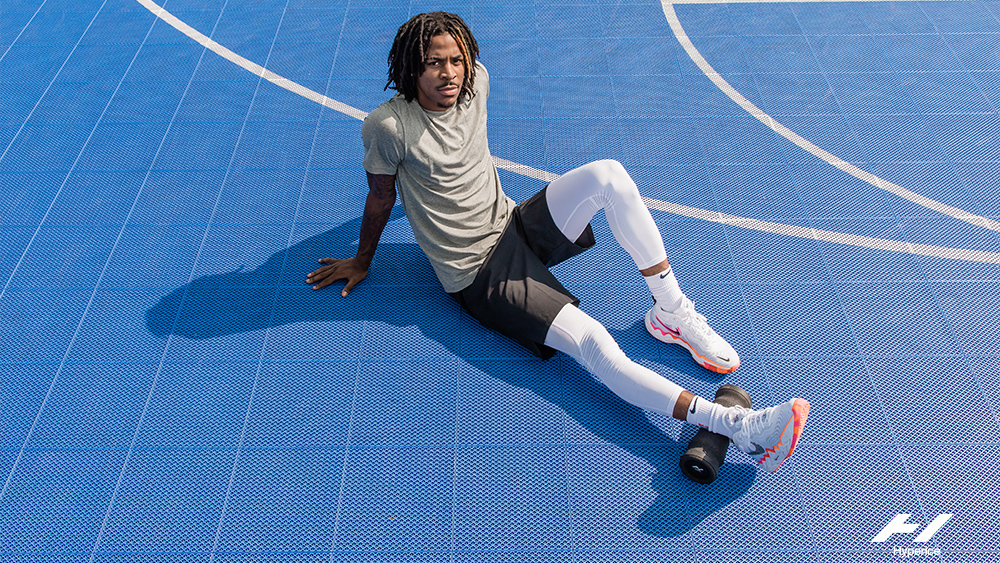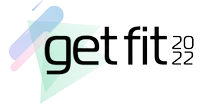Is it safe to train with DOMS? The truth about Delayed Onset Muscle Soreness
Is it safe to train with DOMS and how to recover from sore muscles? We asked an expert



You had a gruelling workout the day before and now you can't roll out of bed without moaning audibly: what happened? What you are experiencing is delayed onset muscle soreness – often being referred to as DOMS – and it's a common occurrence after strenuous lower body workouts.
No need to worry, though, as DOMS is not permanent and it's possible to speed up the elimination process by following certain recovery methods. Is it safe to train with DOMS and how to recover from sore muscles? These are the big questions.
We asked Gareth Nicholas, Maximuscle Sports Scientist and Performance Nutritionist, to compile a guide on how to tackle DOMS so you can crush your fitness goals and get fit for 2022 without having to worry about soreness.
What is DOMS?
"DOMS are common aches and pains after you've been training", Gareth explains, "DOMS is caused by micro-tears in your muscles which causes inflammation. Once given enough time, DOMS will heal, and you will be able to continue your training as normal."
As Gareth notes, especially if you are new to training, trialling a different programme or haven't trained in a while, you will most likely experience DOMS, and it may take a little longer than usual to recover from them. As the name suggests, delayed muscle soreness sets in after the workout, usually a day later, and for whatever reason, it's more noticeable after leg workouts.
These aches and pains will soon fade, provided you take time to rest and consume the correct nutrients to aid recovery. "It is key to note that DOMS affect people differently", Gareth adds, "Some may be able to go about normal day-to-day activities, and others may be unable to carry out small muscular movements."

How to recover from DOMS
You might have heard this, but it's worth reiterating: rest is crucial in training. If you don't allow your body to rest, you will soon get injured. And rest is especially important to treat DOMS.
Get all the latest news, reviews, deals and buying guides on gorgeous tech, home and active products from the T3 experts
"If you are suffering from DOMS, your body will need to heal, and, likely, your workouts won't be as efficient if you are still suffering from DOMS", Gareth says, "I advise leaving at least 24 hours between workouts to ensure that the pain you are feeling is DOMS rather than an injury you have encountered whilst training."
DOMS can last anywhere between 24-72 hours, and pain should subside in a couple of days. You can train with DOMS; however, it's best not to hit the same muscles day after day to ensure they are already for workouts.
Listen to your body, and should you feel your aches ease slightly, you are okay to carry on with your training schedule. "If you continue to train consistently, then your body will build a tolerance to exercise again, meaning DOMS is less likely to occur", Gareth adds.
DOMS recovery: The RICE Method
As Gareth suggests, one of the best ways to combat DOMS is the RICE method, where RICE is an acronym, just like DOMS.
The RICE method consists of rest, ice, compression and elevation, and it should help with recovery with DOMS. A gentle massage of the muscles will also help get the blood pumping around the affected areas to speed up the recovery process. Compression garments can help you recover from DOMS faster: it's one of the main benefits of wearing compression shorts, after all.
Some people might suggest using massage guns to treat DOMS, but we'd argue that foam rollers are better for this purpose. Massage guns are better suited for priming the muscles before workouts, whereas foam rollers can help gently increase circulation under the skin, precisely what you need when you're experiencing DOMS.

DOMS recovery: Protein
Increasing your protein intake will aid the muscle recovery process.
"When suffering from DOMS it means that the exercise you have done causes a breakdown of muscle protein", Gareth says, "In order to reduce the risk of suffering from DOMS, it is advised to have an early intake of high-quality complete protein after your workout."
Gareth says getting your protein in as soon as possible after the workout is most beneficial as it is when the body is most receptive. In this window of time after your workout, aim to eat around 20 grams of protein to encourage the rebuild and maintenance of muscle. If you are unable to stomach foods after a workout, try liquid nutrition alternatives such as a protein shake or an oat and fruit smoothie.
[Editor's note: there is some merit to the anabolic window concept but it's not clear just how beneficial it is to take protein and carbohydrates right after workouts. If you can's stomach food or drinks right after the workout, there is no need to force them down. Just have them a bit later. Make sure you drink enough water, though.]
Gareth kindly included some high protein post-workout options below to aid muscle rebuild and maintenance:
- Baked potato + tuna (1 large potato + 70 g tuna)
- Breakfast cereal + semi-skimmed milk (50 g cereal + 250 ml milk)
- Fruit smoothie (300 ml)
- Beans on wholemeal toast (200 g + 2 slices)
- Rice pudding (300 g)
- Bread roll + egg filling + 1 banana (1 bread roll + 100 g filling)
- Protein powder (30g serving with water)
- Protein bar (1 bar)
This feature is part of T3's Get Fit 2022 campaign. We’ll be bringing you a wealth of guides, features, deals and news to help you get healthy, fit and ready for anything the new year can throw at you. Whether you’re a newcomer to fitness or someone with a passion for it, we’ll bring you all the best workouts, diet advice and gear to set you on the right track.

Matt Kollat is a journalist and content creator who works for T3.com and its magazine counterpart as an Active Editor. His areas of expertise include wearables, drones, fitness equipment, nutrition and outdoor gear. He joined T3 in 2019. His byline appears in several publications, including Techradar and Fit&Well, and more. Matt also collaborated with other content creators (e.g. Garage Gym Reviews) and judged many awards, such as the European Specialist Sports Nutrition Alliance's ESSNawards. When he isn't working out, running or cycling, you'll find him roaming the countryside and trying out new podcasting and content creation equipment.
